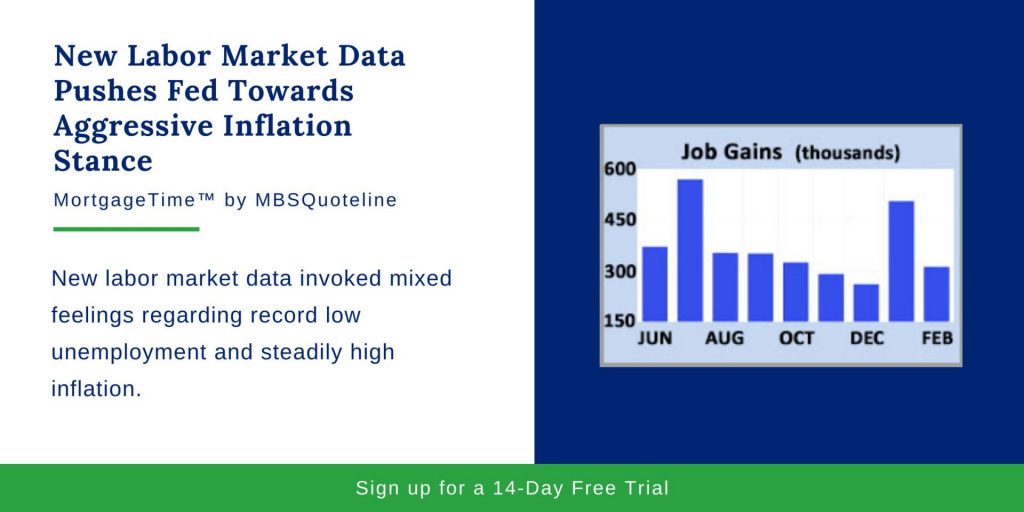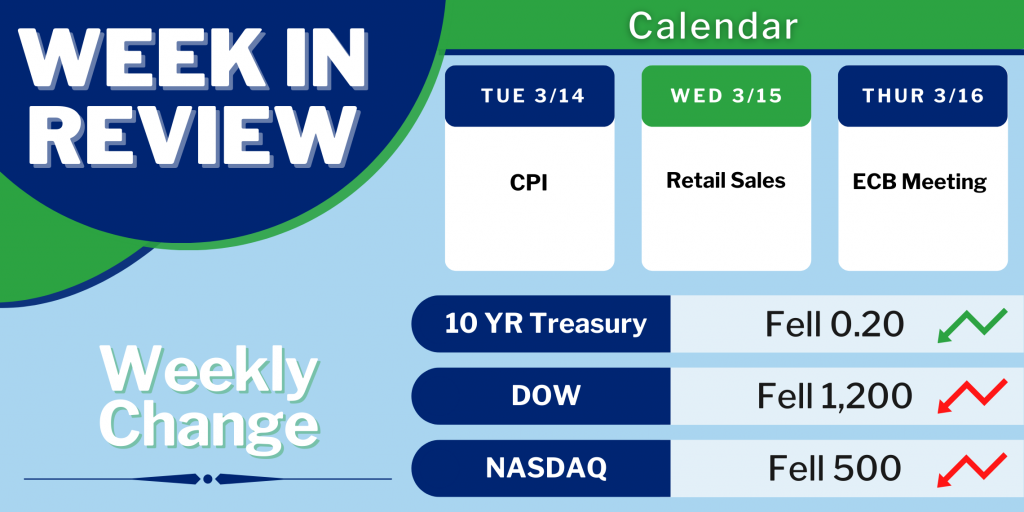New labor market data invoked mixed feelings regarding record low unemployment and steadily high inflation. Overall, smaller than expected wage increases and a reduced outlook for global economic growth due to troubles in the banking sector proved favorable for mortgage markets. As a result, mortgage rates moved lower.
Mixed Feelings on New Labor Market Data
The latest Employment report contained mixed news. After the economy added 517,000 jobs in January, the consensus forecast for February was for a more moderate 225,000. This was exceeded with gains of 311,000.
The gains occurred broadly. However, the leisure, hospitality, professional services, and retail sectors showed particular strength. With a strong labor market, the unemployment rate unexpectedly rose to 3.6% from 3.4%. Unemployment of 3.4% is the lowest level since 1969.
New Labor Market Data Creates Strong Environment for Employees
Average hourly wages, an indicator of wage growth, were 4.6% higher than a year ago. This is high by past standards, but below the consensus forecast for an annual rate of 4.8%. The current labor market is a major concern for Fed officials. The Fed feels low unemployment will lead to larger wage increases. Greater inflationary pressures could arise as companies compete for workers.
The JOLTS report measures job openings and labor turnover rates. The JOLTS report latest data also indicated that the labor market remains very tight. At the end of January, there were an enormous 10.8 million job openings. This was above the consensus forecast and over 4 million more than in January 2020 prior to the pandemic. There were 1.9 job openings for every unemployed worker, up from typical readings around 1.2 before the pandemic. A high level of openings shows a strong labor market, with companies struggling to hire enough workers.
Labor Market vs. Inflation
In semi-annual testimony to Congress this week, Fed Chair Powell maintained a very aggressive stance on fighting inflation. Powell emphasized that the federal funds rate may need to increase even higher than anticipated. Rates may also need to remain there for a longer period of time to bring down inflation.
He warned that future rate hikes could be 50 basis points rather than 25 depending on the incoming economic data. From the good news on growing wages and strong job gains, investors remain divided about the rate hike at the next Fed meeting. The highly anticipated CPI inflation report next week may be the deciding factor.
Coming Up Next Week
After the latest news on the labor market, investors will be closely watching the Feds plans for future rate hikes. The most anticipated economic report of the week, the Consumer Price Index (CPI), releases on Tuesday. CPI is a widely followed monthly inflation indicator that looks at the price changes for a broad range of goods and services.
Retail Sales will come out on Wednesday. Since consumer spending accounts for over two-thirds of U.S. economic activity, the retail sales data is a key measure of the health of the economy. Housing Starts and Import Prices will come out on Thursday. The next European Central Bank meeting also will take place on Thursday.
After the new labor market data came out, mortgage rates rose by week’s end. Never miss an update with MBSQuoteline. To receive by-the-minute updates on mortgage-backed securities, try our platform free for 14 days.
Stay connected with MBSQuoteline on social media by following us on Facebook, Twitter, and LinkedIn.
All material Copyright © Ress No. 1, LTD (DBA MBSQuoteline) and may not be reproduced without permission. To learn more about the MortgageTime™ newsletter, please contact MBSQuoteline at 800.627.1077 or info@mbsquoteline.com.



